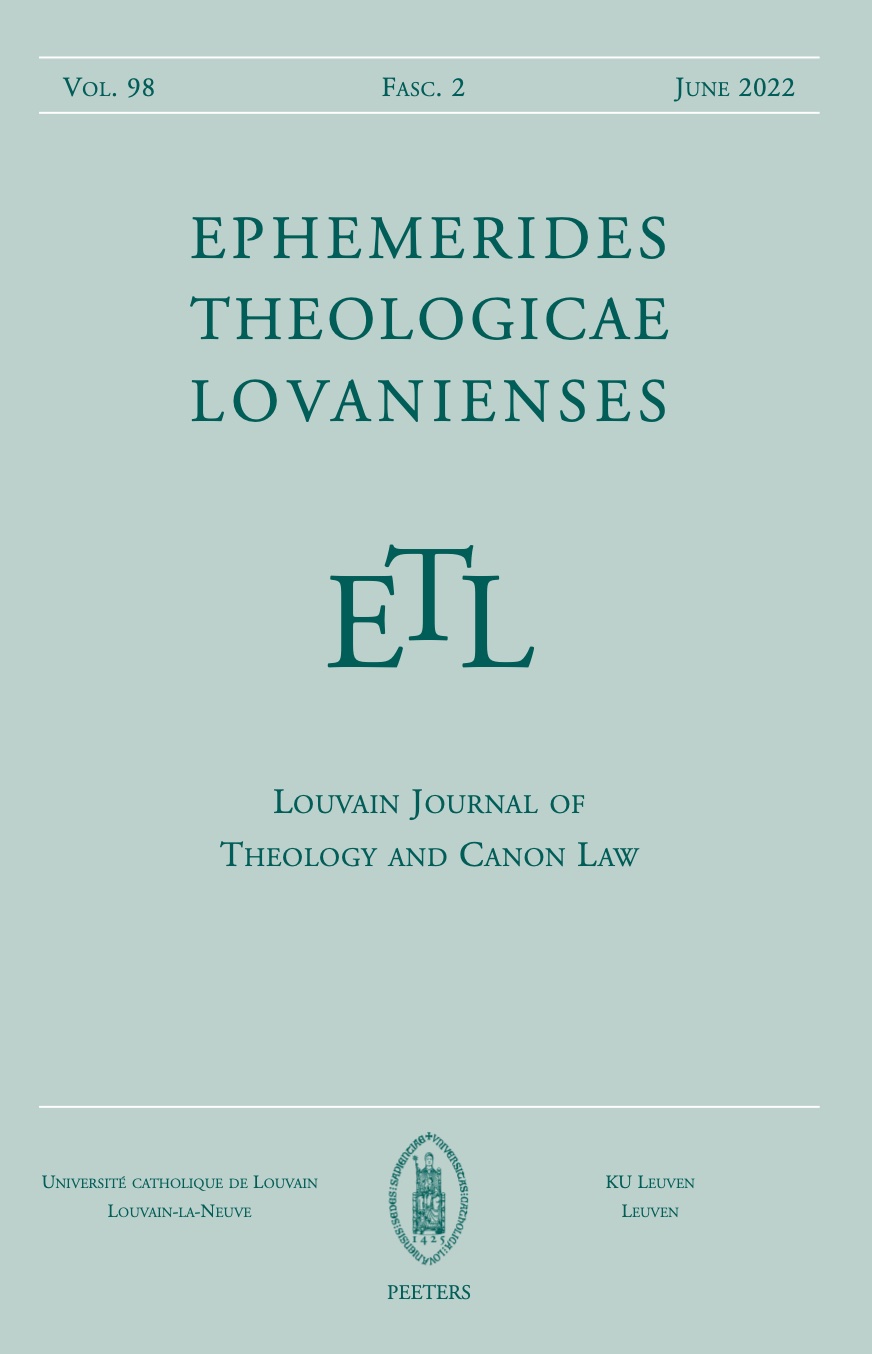 previous article in this issue previous article in this issue | next article in this issue  |

Preview first page |
Document Details : Title: Traditions évangéliques et herméneutique juive Subtitle: Le serpent d'airain de Jean ne repose-t-il pas sur une guématrie? Author(s): LOISEAU, Anne-Françoise Journal: Ephemerides Theologicae Lovanienses Volume: 83 Issue: 1 Date: 2007 Pages: 155-163 DOI: 10.2143/ETL.83.1.2021746 Abstract : In John 3,14-15, Jesus compares Moses lifting up the serpent in the wilderness with the Son of man doomed to be lifted up, so that whosoever believes in him have eternal life. Whence originates this astonishing comparison? In Num 21,8-9, Moses’serpent of brass is supposed to be set upon a pole. This pole is expressed in Hebrew as nes, and in the Aramaic translation of Neof. 1 and others tg, as athar teley, an elevated place. But as this verb teley means also to “hang, to crucify”, one could also understand “the place of a crucified man”, that is the cross. And in Es 11,10-12, the descendant of Jesse (the Davidic king, the messiah) shall stand for a nes (an ensign) for the nations. Moreover, the Es 14,29 Tg translates MT “serpent” as “messiah”. This interpretation can be explained by the rabbinic method called gezerah shawah: as we find the word “root” in Es 14,29 and in Es 11,10, the messianic significance of the latter text has influenced the other one. Besides, the mathematic value of “serpent” and “messiah” is the same (358) by guematria. We can conclude that John’s prophecy concerning the Son of man (= serpent = Messiah elevated on the cross) is founded on such traditional interpretations. |
|


